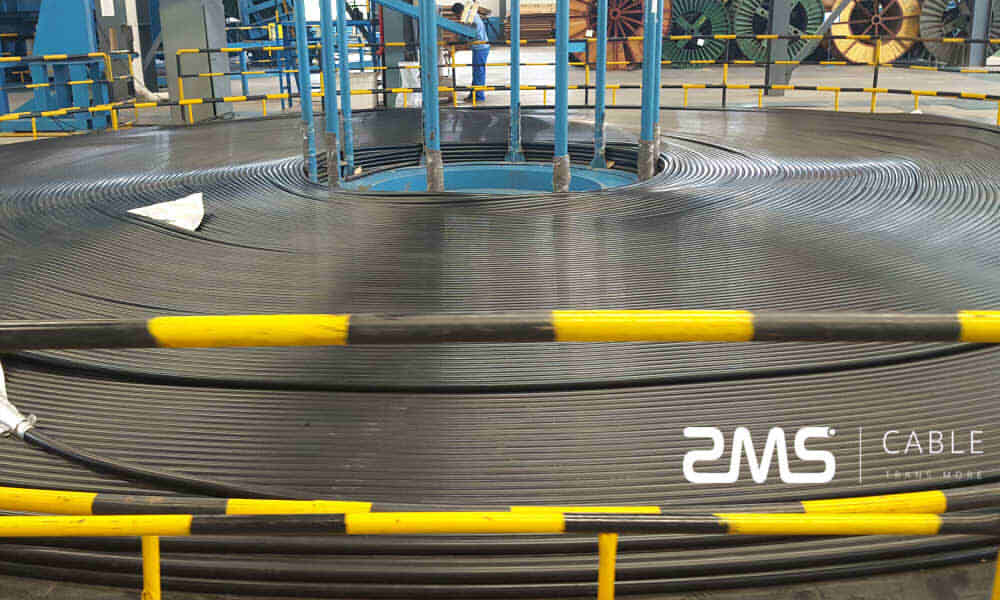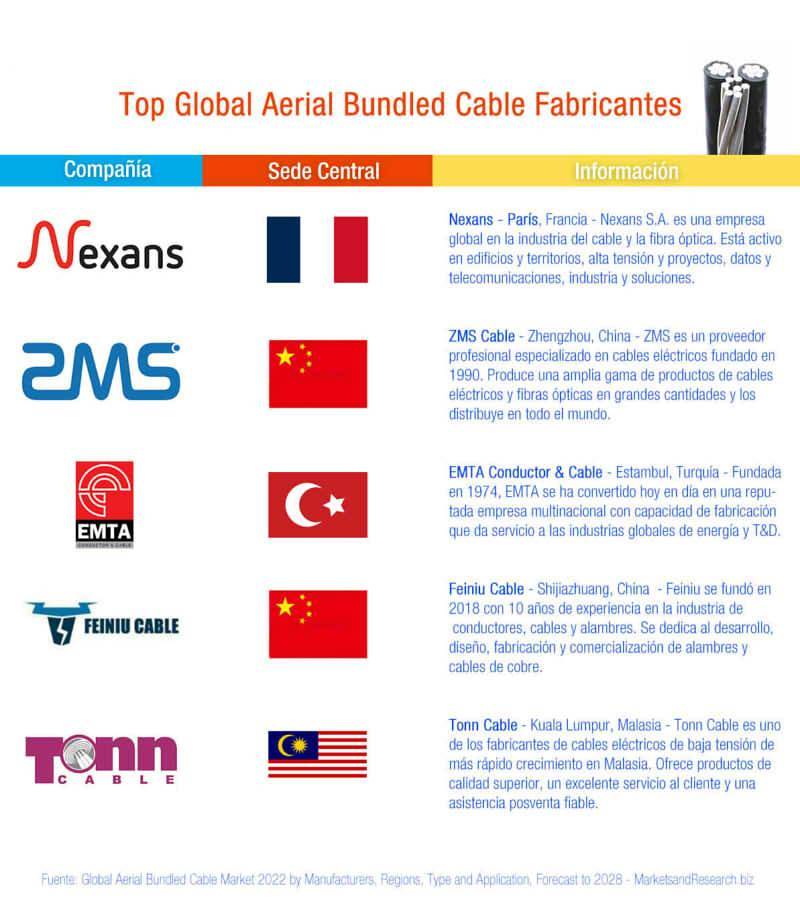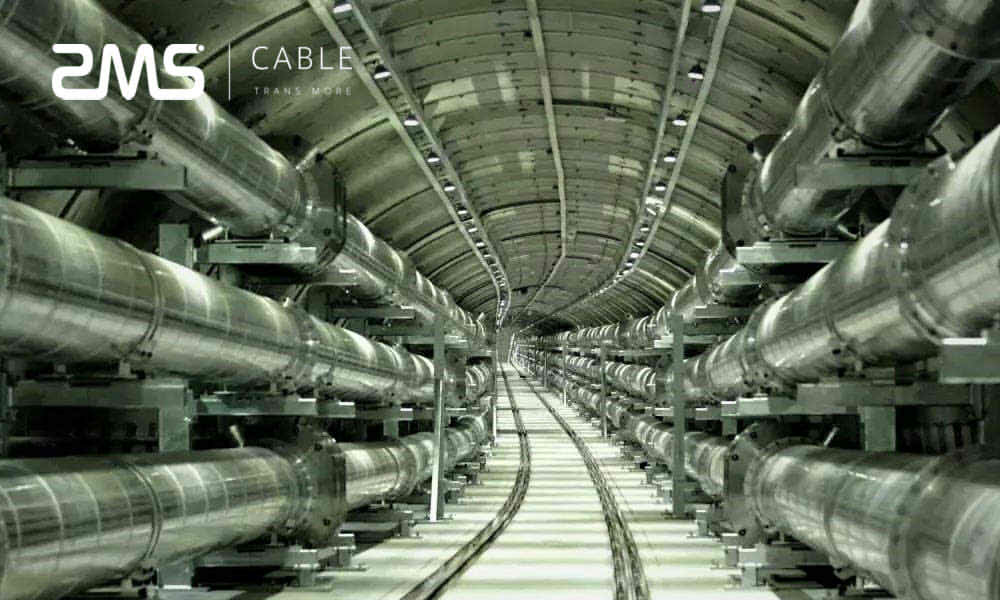The cable industry is the foundation for the smooth development of the modern economy and society.. Focusing on the cable industry 10 kV and above, This report indicates that the trends in the electrical cable sector are oriented towards high capacity, underground use and energy efficiency.
10kV and above cables are mainly used in the generation field, power transmission and distribution. They mainly serve in some large industrial and commercial buildings. From the technical point of view, los cables 10 kV and above are currently available mainly in the form of underground cables, airlines and GIL (gas insulated transmission lines).
Each of the three technical options has its own advantages and disadvantages.. The main advantage of underground cable is that it does not take up much space, but the disadvantage is that the fault points are difficult to find and the insulation is prone to deterioration. And the main advantage of airlines is that they are cheap, but the main drawback is that the support facilities take up a lot of space. The GIL has the advantages, above all, your performance, and as disadvantages, its high price.
These three transmission modes are expected to continue to be the main options for building large-scale networks..
Urban development and offshore wind promote rapid development of the cable sector.
Despite the excellent profitability of overhead cables, the news urban transmission and distribution lines are increasingly being built with underground cables for space reasons, environmental protection and operating safety. Besides, existing urban overhead lines will increasingly become underground cables.

Regarding submarine cables, It must be seen that offshore wind energy, as an important part of the future generation of new energies, is growing at a rapid pace. Submarine cables not only benefit from the growth of installed offshore wind capacity, but also the growth of the distance of offshore wind energy. In the context of the global energy revolution, Submarine cables are expected to enter a golden period of development as the preferred solution for interconnecting subsea energy supplies..
New conductors help increase transmission capacity of overhead lines.
The air transmission solution is mainly based on air isolation. Therefore, has a low cost, a large space occupation and a large capacity. With the acceleration of the construction of new energy systems, Global demand for system power transmission capacity is expected to increase rapidly.
Recently, MarketsandResearch.biz published the “Global Aerial Cable Market Grouped by Manufacturers, Regions, Types and Applications Forecast 2022-2028”. The report foresees a constant growth of overhead cables until 2028 for the main companies in the cable sector (Nexans France, ZMS Cable Company, EMTA Conductors and Cables, etc.).

The future development trend of airlines will be towards high capacity. New projects can be built with more energy efficient conductors and existing projects can be retrofitted with additional capacity.
(1) Energy efficient conductors are suitable for new projects to reduce transmission losses.
Conventional overhead line cables are made of aluminum with a steel core.. The conductive part is mainly hard aluminum with a conductivity of 61% from IACS. And the load-bearing part is mainly a steel core with a conductivity of only 9% from IACS. To improve the overall conductivity of the conductor and reduce losses, it is necessary to increase the conductivity of the outer braided aluminum section or use a charging core with higher conductivity.
The outer braided section can be made of high-conductivity hard aluminum alloy (61,5% – 63% IACS) or soft aluminum (63% IACS). For the charging core, high strength aluminum alloy core can be used (52%-55% IACS) instead of steel. So, Aerial cables can be produced with higher electrical conductivity and also excellent tensile strength.
(2) Capacity increase drivers are suitable for already completed projects.
In theory, There are two main methods to add capacity to existing lines. One way is to replace the conductor with a larger section aerial conductor.. Another way is to replace the driver with a driver with increased capacity.
Increasing the cable cross section would considerably increase the total weight of the overhead conductors. Therefore, new towers would have to be rebuilt. This method involves a high investment and a long construction period..
The use of conductors with additional capacity allows capacity to be increased without adding too much to the total weight of the overhead cables. It has the advantage of the absence of tower replacement, The total investment is low and the construction time is short. With these new types of conductors, capacity increases of between 30% and the 150% capacity, which makes them a very profitable option.
In summary, aluminum alloy cores, soft types of aluminum and carbon fiber composite cores, as well as other new air conductors, will be an important development direction for airlines in the future.
Very high capacity transmission: GIL systems

GIL transmission systems mainly consist of grounded aluminum alloy casing and internal aluminum tubular conductor, isolated by a gas such as SF6.
GIL lines have lower transmission losses, lower capacitance effects and higher capacity than cables. Its high transmission capacity (until 3.000 MVA protects a single circuit a 550 kV) allows them to be connected directly to overhead lines.
Currently, although the initial cost ratio of the GIL is high, has a long lifespan. There is a GIL system of more than 300 km long that has been operating for more than 35 years without failures recorded.
GIL is the preferred choice for high capacity transmission systems over short distances compared to large section cables that require air or water cooling..
Resume
Analyzing the different modes of energy transport, ZMS determines that the future direction of cable development will be high capacity, underground and energy efficient. The evolution of technology has led to a number of new changes in the cable industry, which will lead to many investment opportunities.
